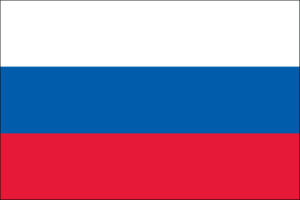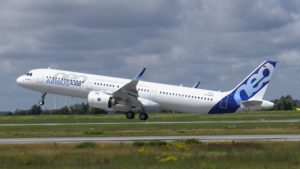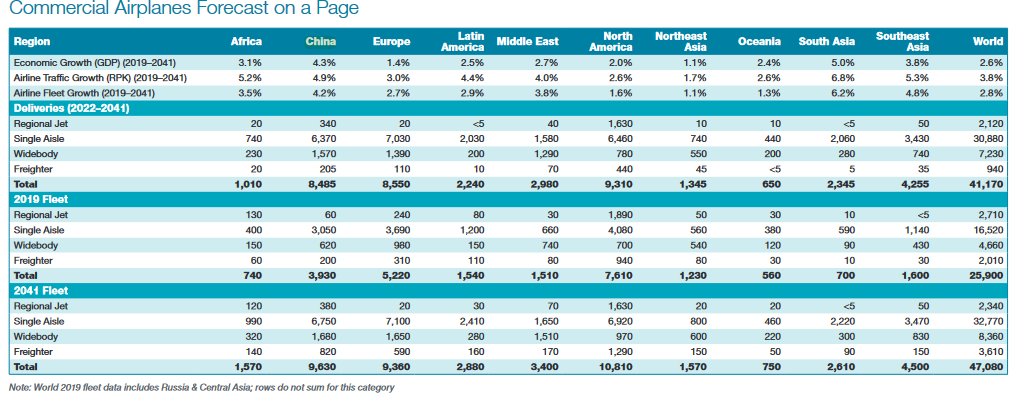Leeham News and Analysis
There's more to real news than a news release.
China banks on C919, but numbers say it still needs Boeing
Subscription Required
By Scott Hamilton
 Sept. 2, 2024, © Leeham News: Airbus and Boeing see China doubling its airliner fleet over the next 20 years. The numbers vary between the two companies. But the underlying data points to how challenging it will be for China to meet this demand without letting Boeing back into the mix.
Sept. 2, 2024, © Leeham News: Airbus and Boeing see China doubling its airliner fleet over the next 20 years. The numbers vary between the two companies. But the underlying data points to how challenging it will be for China to meet this demand without letting Boeing back into the mix.
Boeing has largely been frozen out of China since 2017 when then-President Donald Trump initiated a trade war with one of the world’s largest economies. Then, Boeing’s self-inflicted wounds came in the form of the 21-month grounding of the 737 MAX, a 20-month suspension of deliveries of the 787, and major, slow rework required for each model.
On top of this, after Russia invaded Ukraine, the Biden Administration—which kept Trump’s tariffs upon taking office in 2021—ramped up the pressure on China, which initially covertly supported Russia’s war on Ukraine. This support became more open as the war dragged on.
Few Boeing airplanes have been delivered to China since 2017 and fewer orders have been placed.
Boeing predicts that China will need 6,720 single-aisle aircraft through 2043. Airbus sees a need for 7,950 single aisles for the same period. On the widebody side, Boeing forecasts a requirement for 1,575 aircraft; Airbus forecasts a need for 1,380. Widebody freighter forecasts for China are 170 and 190 by Boeing and Airbus, respectively.
Let’s compare these numbers with production rates. China still needs Boeing.
Aircraft production woes stretch far beyond Boeing
Subscription Required
By Judson Rollins
June 17, 2024, ©. Leeham News: Estimating airplane delivery rates isn’t much more than a guessing game nowadays.
While many headlines point fingers at beleaguered Boeing and Spirit AeroSystems, aviation’s production woes are much more complex. Even in 2024, the labor shortage legacy of COVID-19 and raw material shortages exacerbated by the Russia-Ukraine war loom large over the industry.
Airbus struggles to deliver airplanes on time, and engine makers also see their deliveries constrained by supply chain issues.
Summary
- Boeing commercial production is far below advertised rates.
- Airbus deliveries suffer from shortages of seats, other parts.
- Embraer says deliveries would be higher without supply chain issues.
- COMAC’s disruption opportunity is dampened by likely trade conflict.
- Pratt and GE Aerospace slowly ramp up delivery of redesigned components.
Boeing, GE optimistic for return to normalcy with China
By Scott Hamilton
June 20, 2023, © Leeham News: Relations between the US and China remained strained, beginning with the Trump Administration’s trade war initiated in 2017—which continues under the Biden Administration.
The strain has been exacerbated by China’s tilt toward Russia during the Russian-Ukraine war. Except for a brief meeting at this year’s G7 meeting between President Xi and President Biden, there has been little in the way of top-level diplomatic contact until this week. Secretary of State Antony Blinken met with Xi this week, leading to optimism by Boeing and GE Aerospace that relations between the US and China may be thawing.
During executive media briefings surrounding this week’s Paris Air Show, Boeing Commercial Airplanes CEO Stan Deal and GE Aerospace CEO Larry Culp gave their outlooks about the near-term future.
A Chinese intervention in Ukraine would kill its aerospace industry
Subcription Required
By Bryan Corliss
Commentary
March 23, 2023, © Leeham News – Chinese leader Xi Jinping flew into Moscow this week for a three-day summit with accused Russian war criminal Vladimir Putin.
 They wined and dined. They talked publicly about economic accords and oil pipelines and pledged mutual support. In private, Putin almost certainly made a plea for stepped-up Chinese support for his faltering invasion of Ukraine. They made bold statements about banding together to oppose the hegemony of the West, which has united against Russia with sanctions including bans on providing Russia with the basic technology it needs to build weapons.
They wined and dined. They talked publicly about economic accords and oil pipelines and pledged mutual support. In private, Putin almost certainly made a plea for stepped-up Chinese support for his faltering invasion of Ukraine. They made bold statements about banding together to oppose the hegemony of the West, which has united against Russia with sanctions including bans on providing Russia with the basic technology it needs to build weapons.
 And at the end of it all, on Wednesday, Xi walked up the jet stairs to his Air China 747, built by Boeing in Everett, America. He turned and waved, and then flew back to Beijing.
And at the end of it all, on Wednesday, Xi walked up the jet stairs to his Air China 747, built by Boeing in Everett, America. He turned and waved, and then flew back to Beijing.
That moment, with Xi standing in front of the massive American-made jet, may just illustrate China’s conundrum right now: Xi, by all accounts, wants nothing more than to shove aside the post-Cold War order that has confined his nation from global Great Power status. An alliance with Putin’s Russia could be a key step toward that.
And Xi, as he looks around the interior of his jumbo jet, has to be acutely aware that China remains dependent upon the Western democracies for software, computer chips, and – critically – aircraft.
- War has created headaches for aerospace
- Chinese tensions are bigger issue
- China loses in a proxy war with West
- Boeing’s China business is effectively frozen
- Airbus in China may also be at risk
Orders at risk: Year-End 2022 snapshot
Subscription Required
By Vincent Valery
Introduction
Feb. 6, 2023, © Leeham News: With the publication of the Airbus and Boeing announcing 2022 orders and deliveries last month, and Boeing’s published its 2022 Annual Report (10-K), we undertake our annual analysis of at-risk deals on their books.
Airbus and Boeing have outstanding orders with airlines where there is a material probability some orders won’t translate into deliveries. Most were the result of airlines encountering financial difficulties, but some were related to contractual disputes. Boeing flags such orders as subject to an ASC 606 accounting rule adjustment.
Unlike Boeing, Airbus isn’t subject to an accounting rule like the ASC 606 adjustments at a program level. Therefore, the European OEM does not break down the orders at risk of cancellation by the program. Airbus only discloses the nominal value of its total adjusted order book in its annual report.
LNA analyzed July 2020, November 2020, August 2021, February 2022, and August 2022 Airbus’ and Boeing’s order books to identify orders at risk and come up with an apples-to-apples comparison. We update this analysis with the latest order books from both OEMs. The above links explain our methodology and its differences with Boeing’s ASC 606 adjustments.
Summary
- Lingering order book cleanup for older programs;
- Improving single aisle order book quality;
- Country-level single-aisle market share
- One order materially affects OEM twin-aisle market share.
A deep dive into the single-aisle market
Subscription Required
By Vincent Valery
Introduction
Jan. 23, 2023, © Leeham News: Boeing’s share of outstanding single-aisle orders has fallen significantly behind Airbus. If we include the order book for single-aisle aircraft seating 100 or more passengers of Airbus, Boeing, COMAC, Embraer, and UAC, the American OEM’s market share is now 37% (Airbus has 58%, COMAC 3%, Embraer 2%, and UAC 2%).
Richard Aboulafia sees a risk that Boeing’s market share in the single-aisle market will dip below 30% without the entry into service of a new aircraft before 2035. Boeing Commercial Airplanes CEO Stan Deal said that it is viable for the American OEM’s single-aisle market share to stay around 40%.
In the 2022 Boeing outlook, LNA also noted that there are significantly more A320ceo than 737 NG operators. A broader operator base means more opportunities to place new orders with a more diversified group of airlines. In the context of no new single-aisle family entering service in the next 10 years, convincing operators to “flip” to the competition will be the primary way to increase market share.
Exclusively looking at the nominal order books and A320ceo and 737 NG operators does not provide a comprehensive view of Airbus’ and Boeing’s relative positions in the single-aisle market, though.
In their 2022-2041 commercial market outlooks (CMO), Airbus and Boeing indicated that nearly half of all single-aisle deliveries would replace older-generation aircraft. Looking at the existing in-service fleet of older-generation aircraft provides a better picture of replacement order opportunities by the OEM.
LNA investigates in this article the existing order books of the five major OEMs and operator bases to better assess their relative competitive positions and quantify the current replacement order opportunities.
Summary
- A comprehensive single-aisle fleet snapshot;
- Breaking down the order books between replacements and growth;
- Keep track of order choices for older-generation operators;
- Remaining replacement order opportunities;
- A word about single-aisle freighters.
Outlook 2023 for China’s COMAC and Russia’s UAC
Subscription required
By Bjorn Fehrm
Jan. 12, 2023, © Leeham News: China’s civil airliner OEM, COMAC, made significant progress during 2022. It achieved Chinese certification for its C919 158-seat domestic airliner in September last year, with the first delivery to the launch customer, China Eastern Airlines, in December. The first aircraft will be used in trial operations during 2023. The C919 follows the regional ARJ21, which has been in operation in China since 2016.
The progress, after several delays, of the COMAC programs is in stark contrast to the airliner progress of Russia’s UAC. The slow progress for the SSJ100, MC-21, and Il-114 programs has now ground to a standstill since the invasion of Ukraine and the ensuing Western sanctions.

Figure 1. Test flight of the first series delivery C919 of China Eastern Airlines. Source: Wikipedia.
Summary:
- China and COMAC have made significant progress in 2022 and will gradually build a viable airliner industry from 2023 onwards with a regional and single-aisle offering.
- The opposite is true of Russia’s UAC. A once viable airliner industry is now crushed by the Kremlin’s decision to invade Ukraine.
China still needs Boeing as much as Boeing needs China, despite interminable limbo
Subscription Required
By Scott Hamilton
Oct. 31, 2022, © Leeham News: China needs Boeing as much as Boeing needs China was the conclusion of an analysis by LNA in July 2021. A trade expert last week agreed. Airbus and China’s COMAC won’t be able to fill the future demand forecast for China.
Michael McAdoo, Partner & Director, Global Trade and Investment of the Boston Consulting Group (BCG) in Montreal and a former strategic chief of Bombardier Commercial Aircraft, told LNA in an interview last week that China needs the Boeing 737 MAX and widebody airplanes to meet demand in the near-to-medium term.
It will be long-term before China’s commercial aviation industry will be competitive with airplane designs and production.
Summary
Forecasts for China’s demand for jet aircraft are consistent between Airbus and Boeing. But COMAC, which is the leader of China’s burgeoning commercial aviation industry, is significantly higher in its forecast. The independent Japan Aircraft Development Corp (JADC) is significantly lower.
- Boeing forecasts that China needs 8,485 new jets through 2041.
- Airbus forecasts 8,420 new aircraft will be needed through 2041.
- COMAC forecasts China will need 9,084 aircraft through 2040.
- JADC is more conservative, forecasting a requirement for 6,172 new jets in China through 2041.
China will account for 21% of the world’s new aircraft deliveries through 2041, Boeing says.
Pontifications: From the aviation perspective, there’s something in China to watch
March 21, 2022, © Leeham News: Eyes are focused on Ukraine and the Russian War. In our corner of the world, commercial aviation, the stakeholders follow the fallout from the war: sanctions placed on Russia which affect overflights, supply chains, oil to Europe (fuel), and Russia’s confiscation of about $10bn worth of airliners from Western lessors and lenders.
But there is another drama playing out on the other side of the world, too. This one involves China and one of its commercial aviation companies, AVIC.
AVIC is a major aerospace company in China. It also has a variety of none-aerospace companies. It’s one of these that caught our eye last week.
The Wall Street Journal on March 14 reported that AVIC subsidiaries involved in solar energy filed for bankruptcy to avoid an $85m judgment after allegedly absconding with intellectual property from two US companies. The firm had to settle for 30 cents on the dollar.
It’s another example of China companies simply ignoring international IP laws.
2022 Forecast: C919 EIS unlikely before 2023-24
Subscription Required
By Scott Hamilton
Introduction
Jan. 17, 2022, © Leeham News: COMAC, the Chinese aerospace company developing the C919, suffered yet another setback last year.
It hoped to deliver the first aircraft, designed to compete with the Airbus A320 and Boeing 737-800/8, to China Eastern Airlines by year end. Not only didn’t this delivery take place, but the program is also only about 15% through the certification flight testing.
At this rate, certification, and delivery this year is questionable. LNA’s forecast for EIS is in 2023 or 2024.
COMAC’s other airplane, the regional jet ARJ21, landed its first order outside China (other than from lessor GECAS years ago).
Summary
- C919 is overweight, shortening range, and adversely affecting fuel economy.
- Commercial success of the C919 won’t be possible.
- ARJ21 lands first foreign operator, but it’s not an arm’s length deal.







